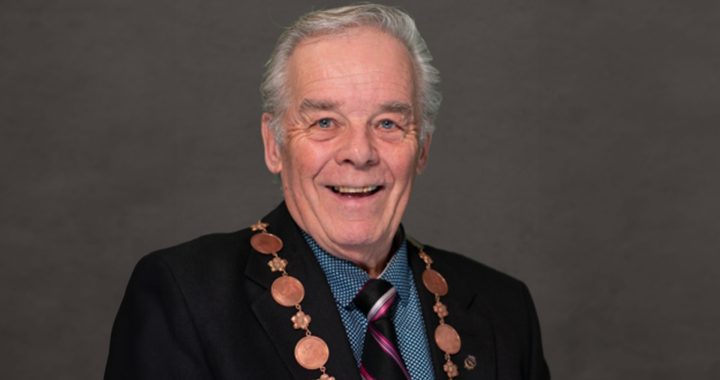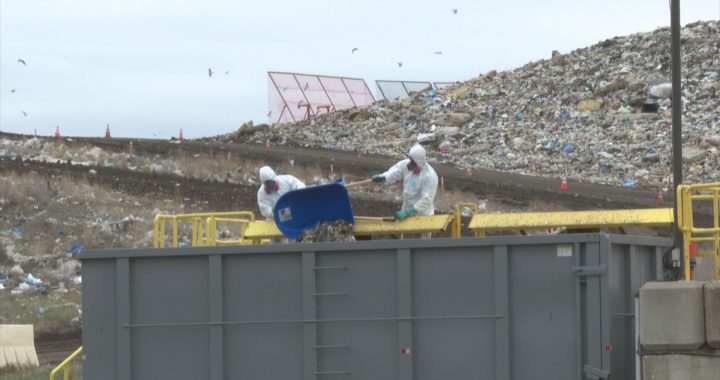After almost 70 years, the Mohawk community of Kahnawake has reclaimed a piece of land that was expropriated for the construction of the St. Lawrence Seaway.
More than 485 hectares (1,200 acres) were lost, as well as access to the river which had devastating impacts on the Kanien’kehá:ka community and the environment.
Now the community is celebrating the completion of the Tekakwitha Island and Bay Restoration project, which began construction in 2020 after years of research and planning by the Kahnawake Environment Protection Office (KEPO).
Patrick Ragaz, general manager of field science at KEPO, says that 15 years ago, community members started raising concerns about the water flow in the bay after it appeared to be stagnating – and aquatic plants had also begun to grow.
“It was interfering with paddling, swimming, fishing, and other activities that were taking place in the bay,” Ragaz said during a recent press conference. “We knew that the seaway was a contributing factor and some of the specifics of that. Having the bay outlet into the seaway directly, the Chateauguay River upstream that is contributing a lot of those sediments and nutrients from agricultural fields sort of set the conditions for the situation that we were experiencing.”
During the seaway construction in the 1950s, blasted rock and clay fill were dumped into the St. Lawrence River, which covered and combined a small archipelago of natural islands and created Tekakwitha Island and bay, according to KEPO.
“(It) became a rocky, flat, and fairly inhospitable place for the next almost 70 years,” he said.
Mohawk Council of Kahnawake Chief Cody Diabo, who holds the environment portfolio at council, called the completion of the project a “milestone” for the community.
“When the bay was first finished, I actually took my family on a walk, and for the first time coming to the island since I was a little child, I saw corn growing in the back. And to me, that was a sign that we were doing something really good for nature, for mother earth, for the environment,” Diabo said.
“To be able to see something growing, some sustenance that is dear to Onkwehón:we people and Kanien’kehá:ka people, corn growing here where it was, essentially, barren for a while.”
Ragaz said that KEPO worked with the St-Lawrence Seaway Management Corporation to increase the flow in the seaway itself, which, in turn, increased the flow in the bay.
Part of the project also consisted of dredging a channel through a section of the bay where sediment was thickest. KEPO also harvested aquatic plants in an effort to concentrate the water flow in the channel.
“We wanted to improve the habitat on the island as well both for wildlife and the community so that it could be more thoroughly enjoyed,” Ragaz said.
Ragaz said that some of the elements that were added include a large linear pond and marsh, a turtle nesting ground, and a community beach. KEPO also implemented invasive species control.
According to KEPO, most of the funding came from the federal government, as well as other sources, including CDPQ Infra, a subsidiary of Quebec’s pension fund manager, the Caisse de dépôt et placement du Québec.
However, not everyone in the community is satisfied with the results of the project.
Sharon Rice, the manager of the Onake Paddling Club, said that they continue to deal with an overgrowth of weeds.
“Our biggest problem is the weeds, the control of weeds. It gives us problems with any boat with rudders, gives trouble to the safety boats because they have propellers so the weeds get caught in that,” Rice said.
So, when KEPO announced that they would be dredging the bay – where the club is located – Rice said that they were very excited.
“However, the only dredging that was done took place 1,000 meters up the river, and it had no effect on us,” she explained.
Diabo acknowledged that there is dissatisfaction with some of the elements of the project but said that they will continue to work on remaining issues like the stagnant water.
For his part, Ragaz said that he was very happy that after so many years the project had finally come to fruition. “What I am most proud of is just seeing the wildlife coming back to the features that have been created,” he said.”









